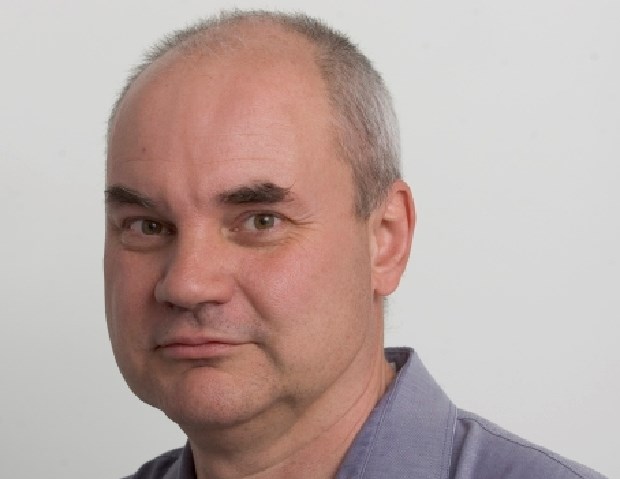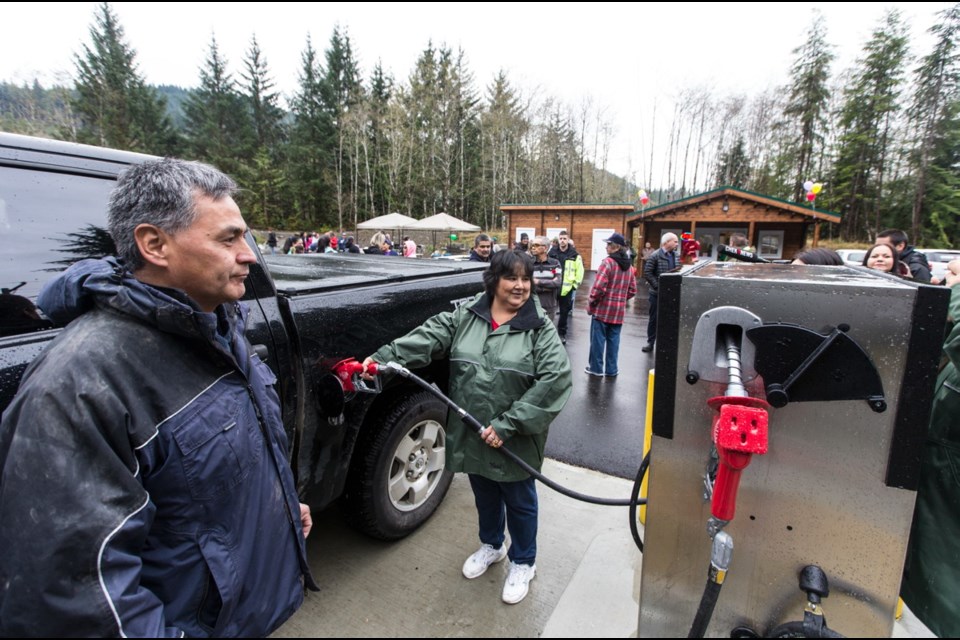 PORT RENFREW — Perched way out at the very edge of Canada, Port Renfrew has long enjoyed a mist-shrouded isolation that is both its greatest asset and most serious challenge.
PORT RENFREW — Perched way out at the very edge of Canada, Port Renfrew has long enjoyed a mist-shrouded isolation that is both its greatest asset and most serious challenge.
Want to get away from it all? The hamlet 74 kilometres west of Sooke is as far as you can go without drowning. It has long been the end of the road, the end of the world, the place you half-expected to find Amelia Earhart or Jimmy Hoffa pumping your gas — if there were gas to pump, which there wasn’t, the last station having shut down more than 20 years ago. “Check your fuel” warns the sign by the road out of Sooke.
Which is why it was a big deal Thursday when the Pacheedaht First Nation opened a new gas bar at Port Renfrew — a symbol of the town’s resurgence.
How big a deal was it? Ninety people, a third of Port Renfrew’s entire population, showed up for the opening, Pacheedaht and non-Pacheedaht alike holding hands in a circle as elder Bill Jones blessed the enterprise.
It was a sign that the town is finally reaching its long-touted potential. It’s coming off a phenomenal tourist season. Investment money is pouring in. Property values have soared.
Contrast that with the days after B.C. Forest Products pulled out in 1990. What had been a company town struggled, one foot in the future, one in the grave as it tried to move from a logging economy to one based on outdoor adventures.
It always had the sports fishermen, keen to chase salmon and halibut at Swiftsure Bank. The West Coast Trail and Juan de Fuca Trail were a mecca for hikers in the summer. Ditto for Botanical Beach. But the roads were nasty, the water supply dodgy, the gas station non-existent and it was wet all winter, which caused the tourist trade to dry up.
In 2002, a Tourism B.C. executive enthused about Renfrew’s potential to become the next Tofino (the T-word has been bandied about a lot over the years) but warned that additions were needed, principally some high-end accommodation and — this was big — stuff to do for day-trippers and others showing up without plans. Those who braved the rodeo of a road from Sooke (“Hang on to your beer!” a memorable piece of guardrail graffiti once read) sometimes just turned around and went back.
Fast forward to today. The water supply is better. The highway from Sooke might still twist and turn through Loss Creek, but is much improved. The old 52-kilometre sphincter-tightening logging road to Cowichan Lake has been straightened and paved to complete the Pacific Marine Circle Route, allowing Victoria-based tourists to sample west coast wilderness without retracing their steps.
Whale-watching, fishing, crabbing, sea kayaking — there’s more to do. Thursday found stand-up paddlers playing in the surf beside the Pacheedaht campground, which sits on a long crescent beach stretching between the Gordon and San Juan rivers. The big trees that loggers used to cut down have become their own draw: Avatar Grove, Big Lonely Doug, the Red Creek fir (the world’s largest Douglas fir) and the San Juan Sitka spruce (Canada’s largest spruce). Rock-star trees. Who knew?
City-slicker tourists like the feel of the place, the people they meet. The unofficial ambassador is Johnny Mac — John McDonald, whose forearm bears a tattoo from the Seoul Olympics, when he represented Canada in archery. Others go by names like Rivermouth Mike, Lonesome Dave and Johnny Two-Beers.
Growth is evident. The Pacheedaht have built a small cedar mill and upgraded their campground. Resident Karl Ablack has subdivided land into lots for 20 single-family houses, the first such development in ages. Mill Bay Marine Group, led by Andrew Purdey, put in the new 60-slip Pacific Gateway Marina. Ian Laing Properties and Three Point Properties, the latter owned by Laing’s father-in-law, Jack Julseth, bought holdings including the hotel and pub, and launched the Wild Renfrew brand, which includes West Coast Trail Lodge, 11 rental cabins alongside the dock and Wild Coast Cottages, comprising 70 strata cabins, most of which are used as vacation rentals. Next summer: a 50-bed hostel and a place to arrange outdoor activities.
“Our growth numbers are staggering,” Julseth says. “It feels like, after 10 years, we’re an overnight success.”
Long-timers have seen the shift. “It’s changed dramatically,” says Pete Hovey, who bought his Trailhead Resort and Charters property back in 1988. It used to be he could duck in and out of Trailhead’s little store as needed. Now it must be staffed full-time in summer. And don’t show up between Easter and Halloween without a reservation.
Hovey tempers his enthusiasm, though. “Yes, we’re growing, but we’re still the end-of-the-road community.” When the power went out last weekend, some Spanish-speaking guests were miffed, thinking he had turned the electricity off at midnight. No, that’s just part of living at the edge of the wilderness in storm season.
Also, Port Renfrew needs more of the mom-and-pop business operators who hunker in year-round, he says. That sentiment was echoed by another longtime resident, Mike Conlin: “That’s what we need more than anything.” New blood is required to fill the ranks of the volunteer fire department and community association. The town must entice more families, too, which is why Conlin is happy to see the Pacheedaht leading the push for a K-12 school. Currently, older kids must bus to Sooke.
Hovey tempers the Tofino talk, too. Port Renfrew doesn’t have the land base, the waterfront for that, he says.
What it can be, though, is an alternative. It’s a relatively easy two hours from Victoria and now offers that circle route. “Those two things have made Port Renfrew a viable option,” Hovey says.
Pacheedaht Chief Jeff Jones agrees: “The roads open up Port Renfrew wide now.”
Not only that, but you can gas up your car to drive them.


